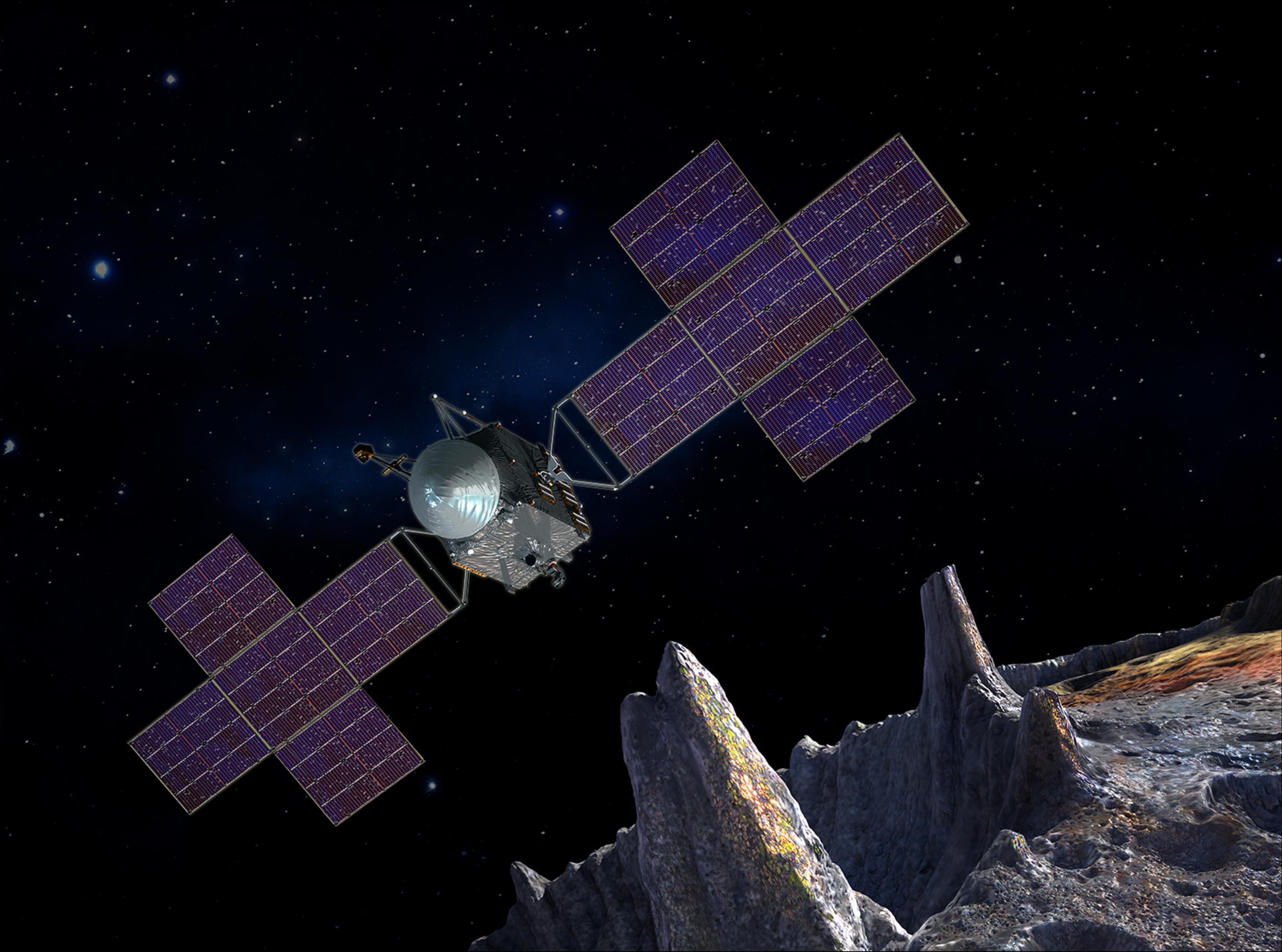
A NASA mission to one of the most intriguing objects in the solar system just cleared a big hurdle on the path toward its 2022 launch.
The Psyche mission, which will explore the 140-mile-wide (225 kilometers) metallic asteroid 16 Psyche, just passed its critical design review (CDR), NASA officials announced today (July 7).
During a CDR, NASA assesses the design of every system and subsystem on a mission, from scientific instruments to communications to power and propulsion gear.
"It's one of the most intense reviews a mission goes through in its entire life cycle," Psyche principal investigator Lindy Elkins-Tanton, managing director and co-chair of the Interplanetary Initiative at Arizona State University, said in a statement. "And we passed with flying colors. The challenges are not over, and we're not at the finish line, but we're running strong."
Related: NASA's Mission to Metal Asteroid Psyche (Images)
With the CDR now in the rearview mirror, the Psyche team can focus fully on building spacecraft hardware for the mission. And that should happen quickly: Assembly and testing operations on the probe are scheduled to begin in February 2021, and all of its science gear must be delivered to the main clean room at NASA's Jet Propulsion Laboratory (JPL) in Pasadena, California, by April of that year. (Though Arizona State University leads Psyche, JPL is in charge of mission management.)
Most of the objects in the main asteroid belt between Mars and Jupiter are rocky. But, strangely, 16 Psyche appears to be made primarily of metallic iron and nickel, a composition similar to that of Earth's core. For that reason, scientists suspect that 16 Psyche may be the exposed core of an ancient planet, whose rocky outer layers were stripped away by impacts long ago.
Get the Space.com Newsletter
Breaking space news, the latest updates on rocket launches, skywatching events and more!
The $850 million Psyche mission will help scientists assess that hypothesis. The probe will conduct an in-depth analysis of the metallic asteroid using three science instruments: a multispectral imager, a gamma ray and neutron spectrometer, and a magnetometer.
The spacecraft will also carry a technology demonstration called Deep Space Optical Communication. This instrument will transmit data to Earth using photons, a more efficient strategy than the traditional radio-wave method, mission team members have said.
If all goes according to plan, Psyche will launch atop a SpaceX Falcon Heavy rocket in August 2022, perform a gravity-assist flyby of Mars in May 2023 and arrive in orbit around 16 Psyche in 2026.
Mike Wall is the author of "Out There" (Grand Central Publishing, 2018; illustrated by Karl Tate), a book about the search for alien life. Follow him on Twitter @michaeldwall. Follow us on Twitter @Spacedotcom or Facebook.
Join our Space Forums to keep talking space on the latest missions, night sky and more! And if you have a news tip, correction or comment, let us know at: community@space.com.

Michael Wall is a Senior Space Writer with Space.com and joined the team in 2010. He primarily covers exoplanets, spaceflight and military space, but has been known to dabble in the space art beat. His book about the search for alien life, "Out There," was published on Nov. 13, 2018. Before becoming a science writer, Michael worked as a herpetologist and wildlife biologist. He has a Ph.D. in evolutionary biology from the University of Sydney, Australia, a bachelor's degree from the University of Arizona, and a graduate certificate in science writing from the University of California, Santa Cruz. To find out what his latest project is, you can follow Michael on Twitter.









